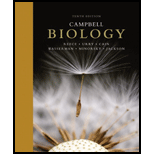
Concept explainers
To explain: How microscopy and biochemistry complement each other to reveal cell structure and function.
Introduction: Microscopy is the use of microscope to see an object that is not visible to the naked eye. Light microscopy uses the light to view the specimen and in electron microscopy, a beam of electron is used to view the specimen. With the help of a light microscope, it is possible to view different cell types, bacteria, algae, and
Explanation of Solution
Microscope is an instrument used to observe minute organisms that are invisible to the naked eyes. The first microscope was devised by Anton von Leeuwenhoek and later several modifications were made. The most commonly used microscopes are light microscope and electron microscope. The electron microscopy and light electron microscopy permit the cells to be studied visually, and they help in understanding the internal structure of the cell and arrangement of the cell components. The different groups of cellular components that are separated by cell fractionation techniques are able to analyze biochemically to determine their function. The correlation between the biochemical function of the cell and the cell component can be found by performing microscopy on the same cell fraction. Microscopy is used to view the tissue, plant, or animal cell or any other organism. Both the plant and animal cell have various organelles that can be separated by cell fractionation. The staining method can be used to analyze different structural and functional properties of the cell or isolated organelles.
Want to see more full solutions like this?
Chapter 6 Solutions
Campbell Biology (10th Edition)
- In one paragraph show how atoms and they're structure are related to the structure of dna and proteins. Talk about what atoms are. what they're made of, why chemical bonding is important to DNA?arrow_forwardWhat are the structure and properties of atoms and chemical bonds (especially how they relate to DNA and proteins).arrow_forwardThe Sentinel Cell: Nature’s Answer to Cancer?arrow_forward
- Molecular Biology Question You are working to characterize a novel protein in mice. Analysis shows that high levels of the primary transcript that codes for this protein are found in tissue from the brain, muscle, liver, and pancreas. However, an antibody that recognizes the C-terminal portion of the protein indicates that the protein is present in brain, muscle, and liver, but not in the pancreas. What is the most likely explanation for this result?arrow_forwardMolecular Biology Explain/discuss how “slow stop” and “quick/fast stop” mutants wereused to identify different protein involved in DNA replication in E. coli.arrow_forwardMolecular Biology Question A gene that codes for a protein was removed from a eukaryotic cell and inserted into a prokaryotic cell. Although the gene was successfully transcribed and translated, it produced a different protein than it produced in the eukaryotic cell. What is the most likely explanation?arrow_forward
- Molecular Biology LIST three characteristics of origins of replicationarrow_forwardMolecular Biology Question Please help. Thank you For E coli DNA polymerase III, give the structure and function of the b-clamp sub-complex. Describe how the structure of this sub-complex is important for it’s function.arrow_forwardMolecular Biology LIST three characteristics of DNA Polymerasesarrow_forward
 Concepts of BiologyBiologyISBN:9781938168116Author:Samantha Fowler, Rebecca Roush, James WisePublisher:OpenStax College
Concepts of BiologyBiologyISBN:9781938168116Author:Samantha Fowler, Rebecca Roush, James WisePublisher:OpenStax College Principles Of Radiographic Imaging: An Art And A ...Health & NutritionISBN:9781337711067Author:Richard R. Carlton, Arlene M. Adler, Vesna BalacPublisher:Cengage Learning
Principles Of Radiographic Imaging: An Art And A ...Health & NutritionISBN:9781337711067Author:Richard R. Carlton, Arlene M. Adler, Vesna BalacPublisher:Cengage Learning Biology (MindTap Course List)BiologyISBN:9781337392938Author:Eldra Solomon, Charles Martin, Diana W. Martin, Linda R. BergPublisher:Cengage Learning
Biology (MindTap Course List)BiologyISBN:9781337392938Author:Eldra Solomon, Charles Martin, Diana W. Martin, Linda R. BergPublisher:Cengage Learning Biology 2eBiologyISBN:9781947172517Author:Matthew Douglas, Jung Choi, Mary Ann ClarkPublisher:OpenStax
Biology 2eBiologyISBN:9781947172517Author:Matthew Douglas, Jung Choi, Mary Ann ClarkPublisher:OpenStax





